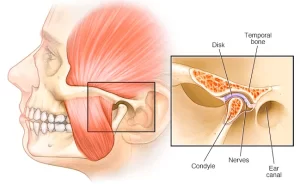De Quervain’s Tenosynovitis or De Quervain’s Syndrome is a painful condition that affects the tendons in your wrist. It occurs when the 2 tendons around the base of your thumb become swollen. The swelling causes the sheaths (casings) covering the tendons to become inflamed. This puts pressure on nearby nerves, causing pain and numbness.
Chronic overuse of the wrist is commonly associated with De Quervain’s Tenosynovitis. Tendons are rope-like structures that attach muscle to bone. When gripping, grasping, clenching, pinching or wringing anything in the hand, two tendons in the wrist and lower thumb normally glide smoothly through the small tunnel that connects them to the base of the thumb. Repeating a particular motion day after day may irritate the sheath around the two tendons, causing thickening and swelling that restricts their movement. Other causes of De Quervain’s Tenosynovitis include direct injury to the wrist or tendon, scar tissue that can restrict the movement of the tendons, or inflammatory arthritis such as rheumatoid arthritis.
Symptoms of De Quervain’s Tenosynovitis include pain near the base of the thumb, swelling near the base of the thumb, and difficulty moving the thumb and wrist when doing something that involves grasping or pinching. A “sticking” or “stop-and-go” sensation in the thumb when moving it. If the condition goes too long without treatment, the pain may spread further into the thumb, back into the forearm, or both. Pinching, grasping and other movements of the thumb and wrist aggravate the pain.
Physical therapy can help with De Quervain’s Tenosynovitis. Reducing pain and inflammation will be the first step to treating De Quervain’s Tenosynovitis. Your therapist may recommend refraining from activities especially those that involve repetitive hand and wrist motions. Manual therapy can help prevent further stress on the tendon. Ice therapy will be incorporated to reduce inflammation. Personalised exercises will also be prescribed to help relieve any tightness in the forearm. Functional training will be taught to prevent recurrence of injury. If in doubt, seek professional advice.
Check out our popular articles: Diastasis Recti, Tight Back Muscles, Irritable Bowel Syndrome (IBS), Temporomandibular Joint (TMJ) Dysfunction, Tennis Elbow, Wrist Tendon Injury, Sciatica, Whiplash, Hernia, Herniated Disc (Slipped Disc).




